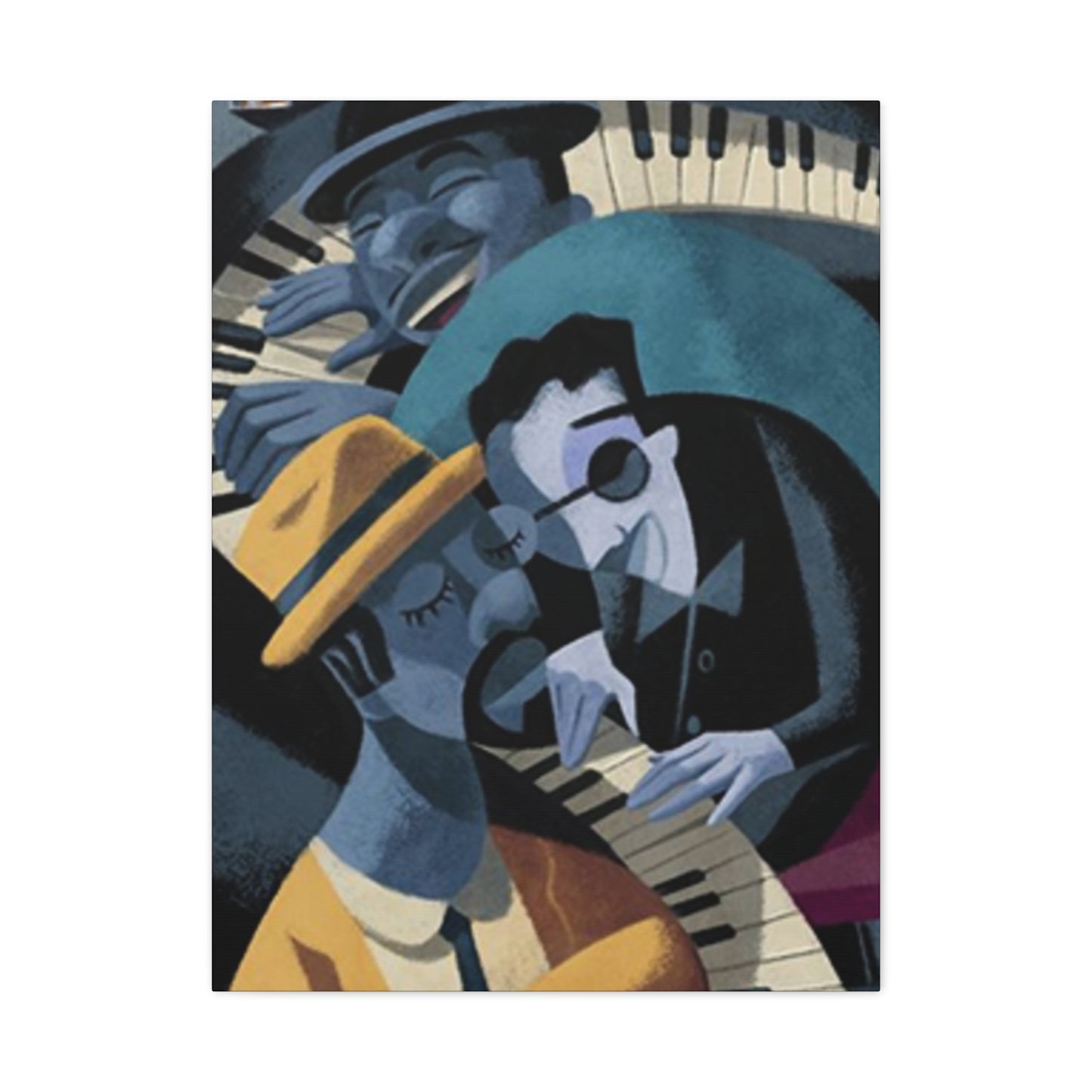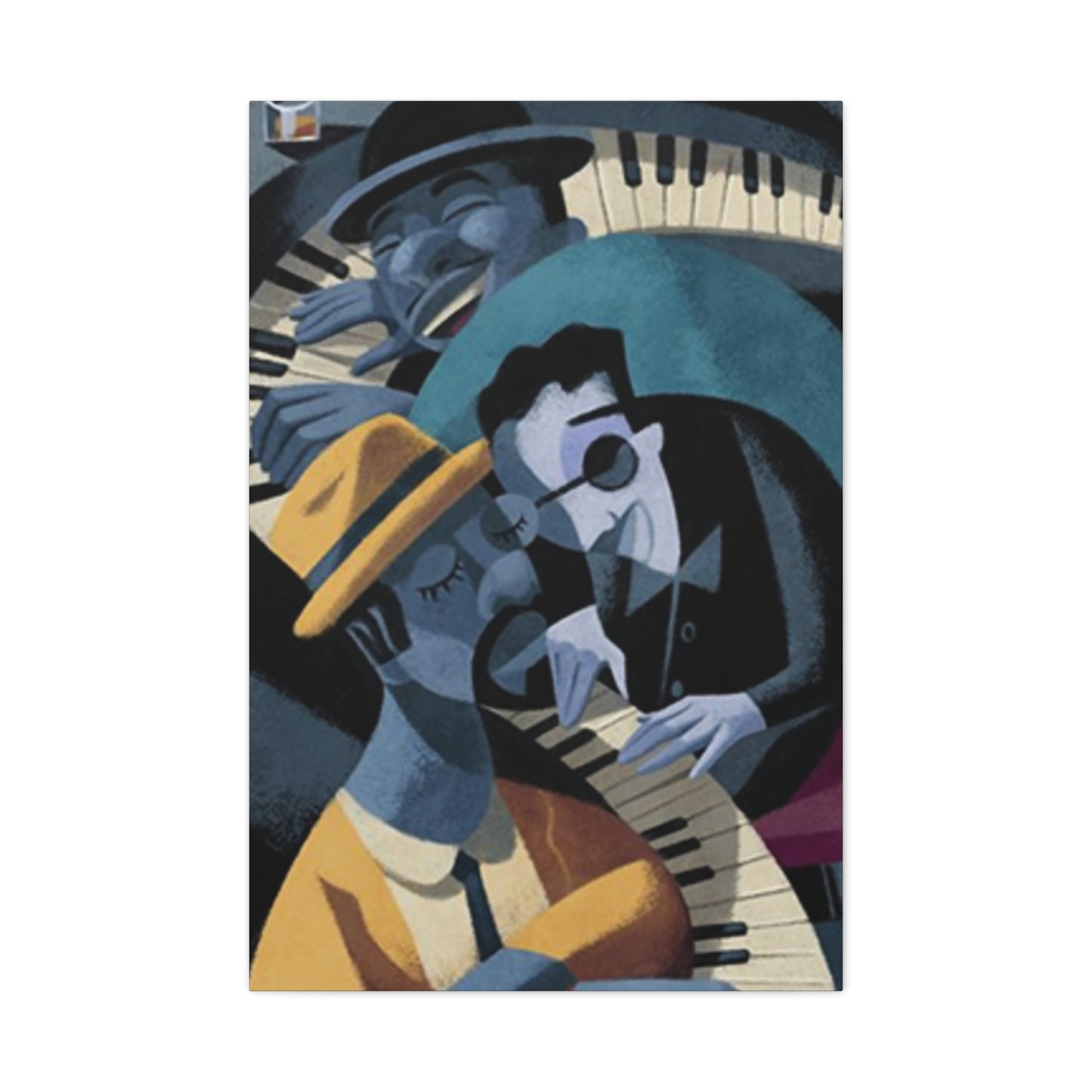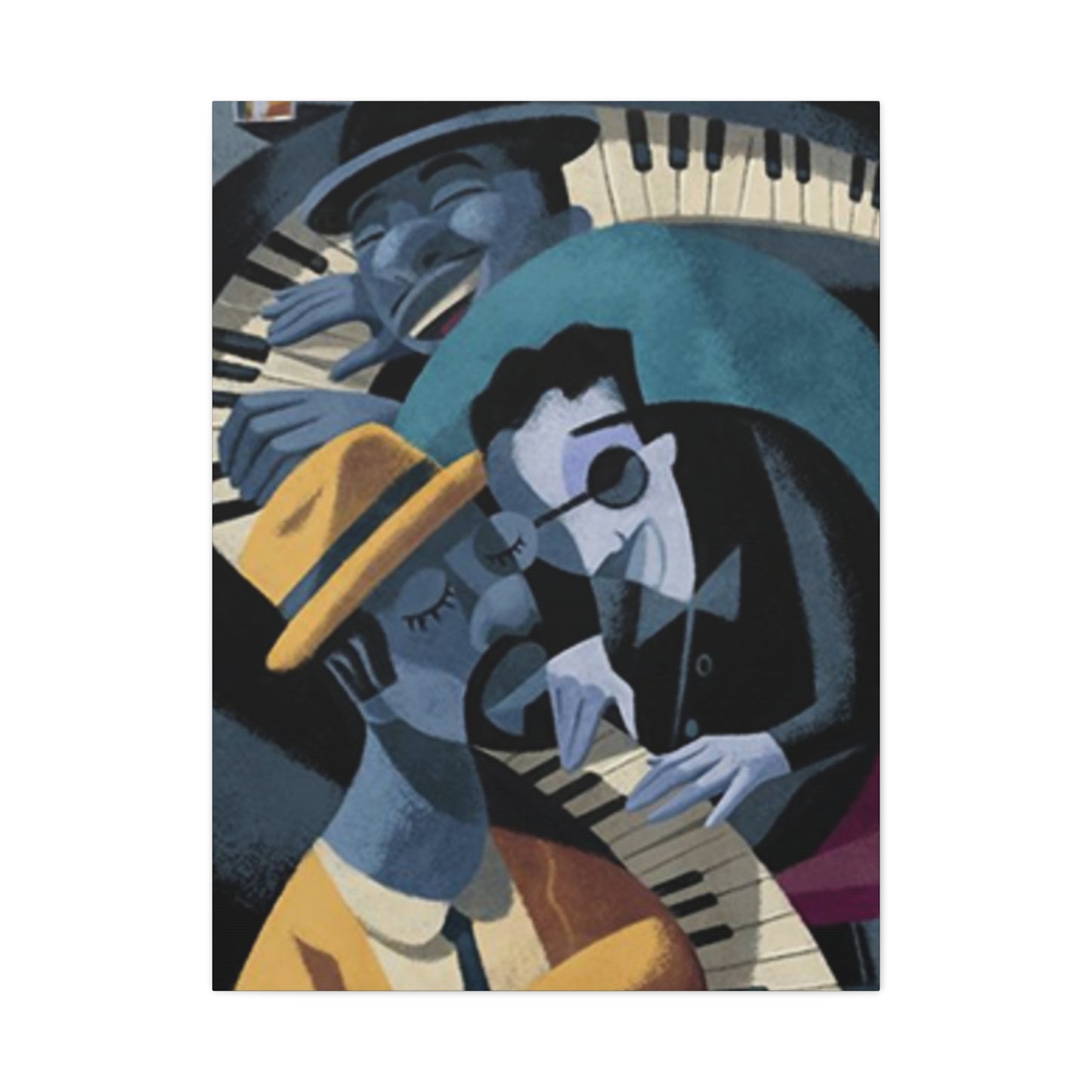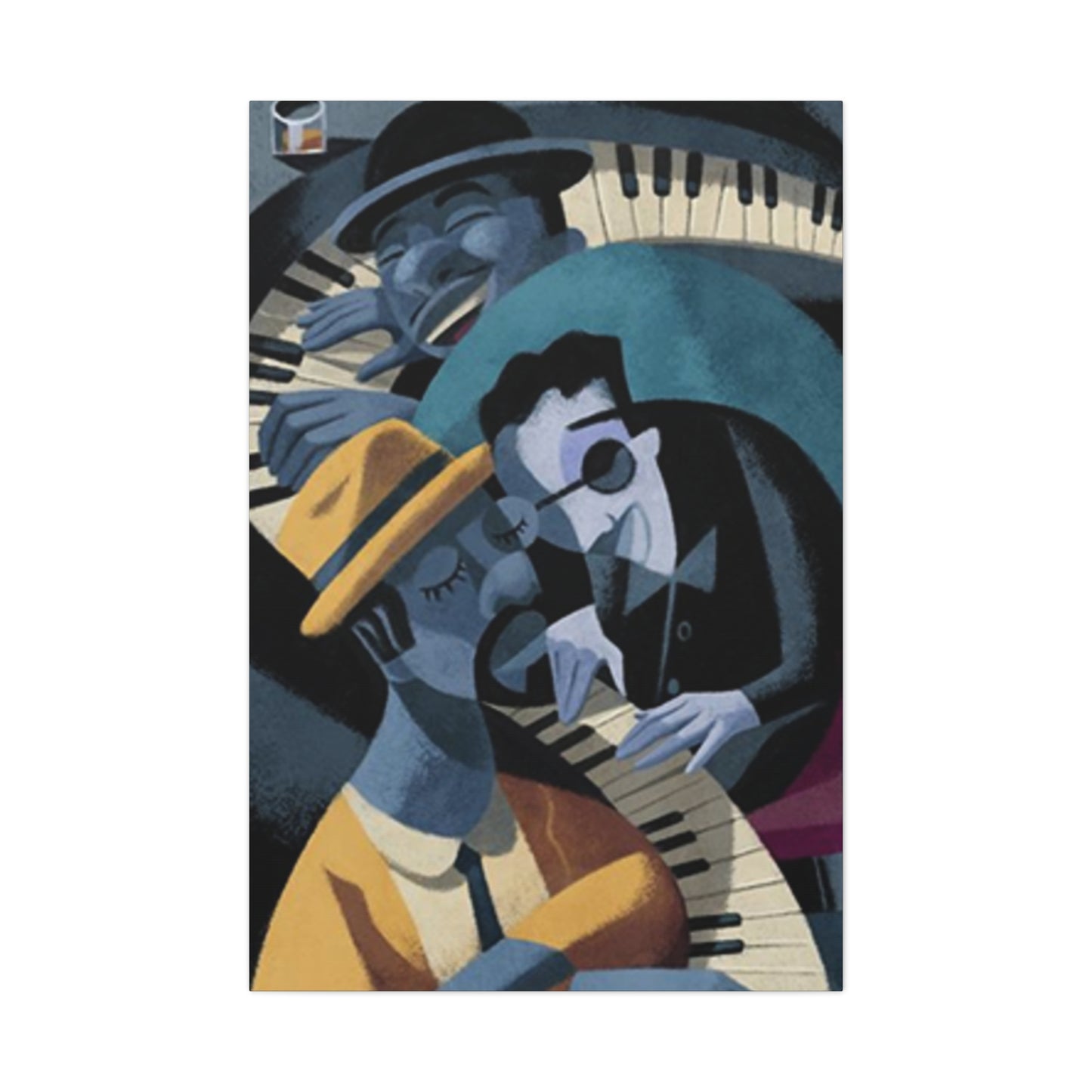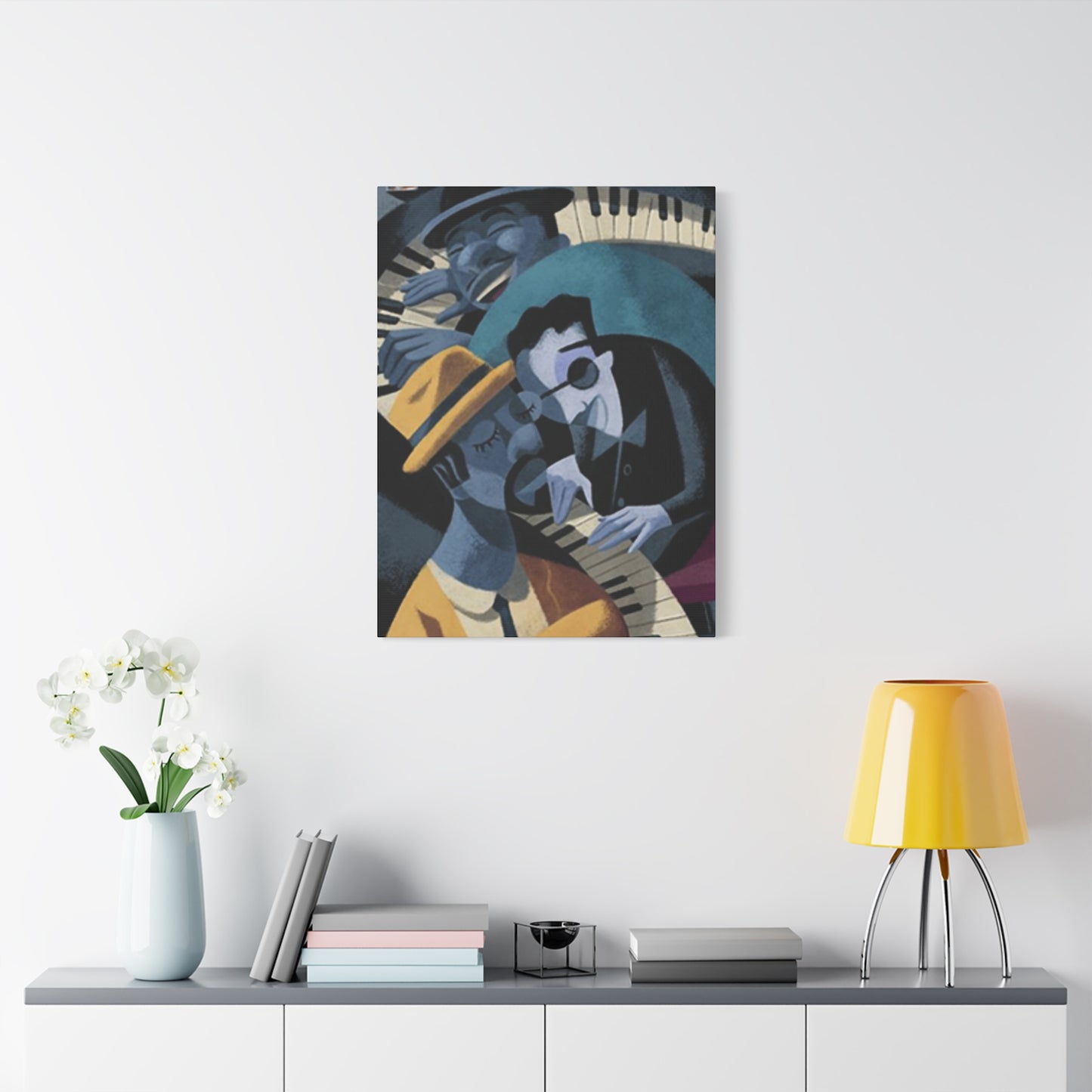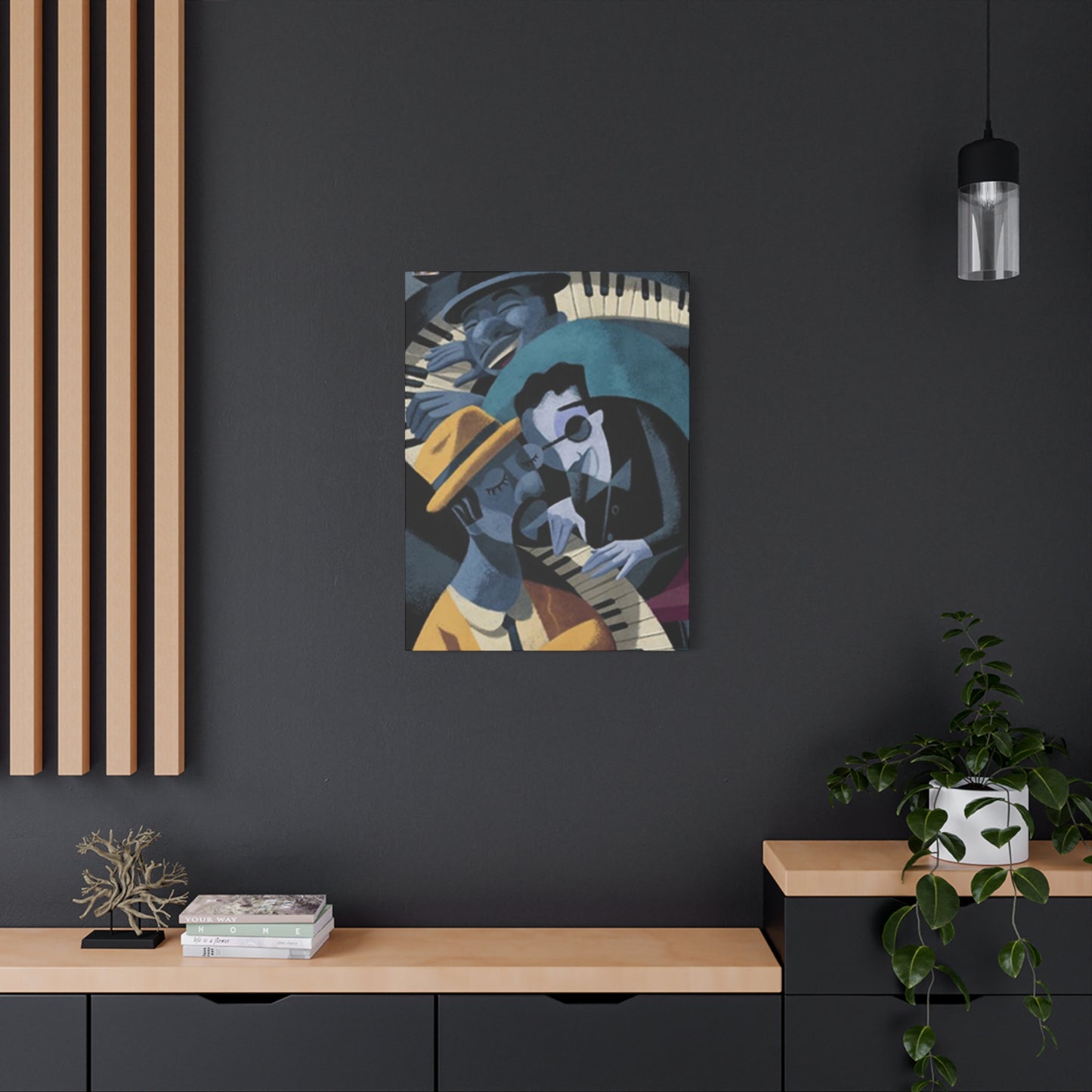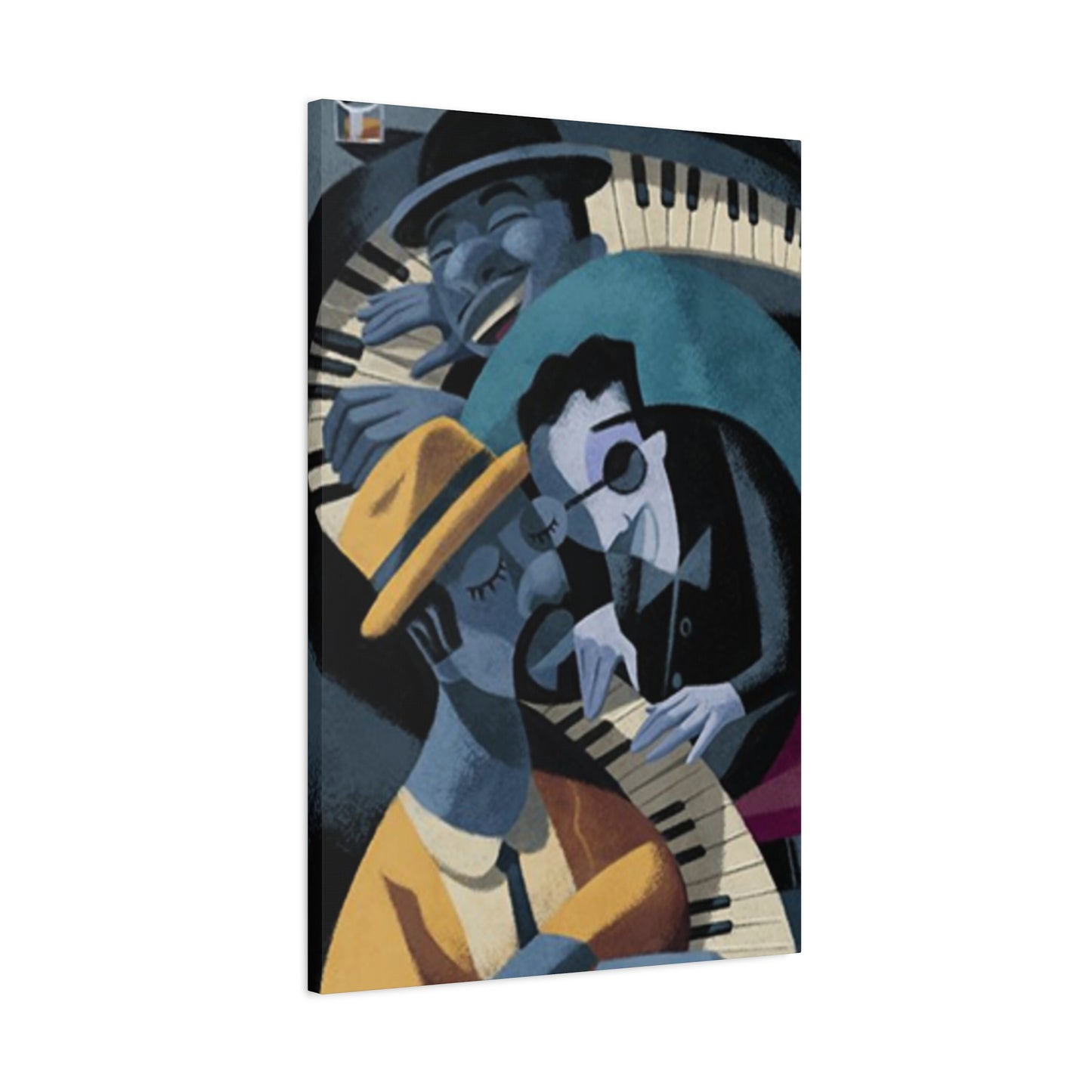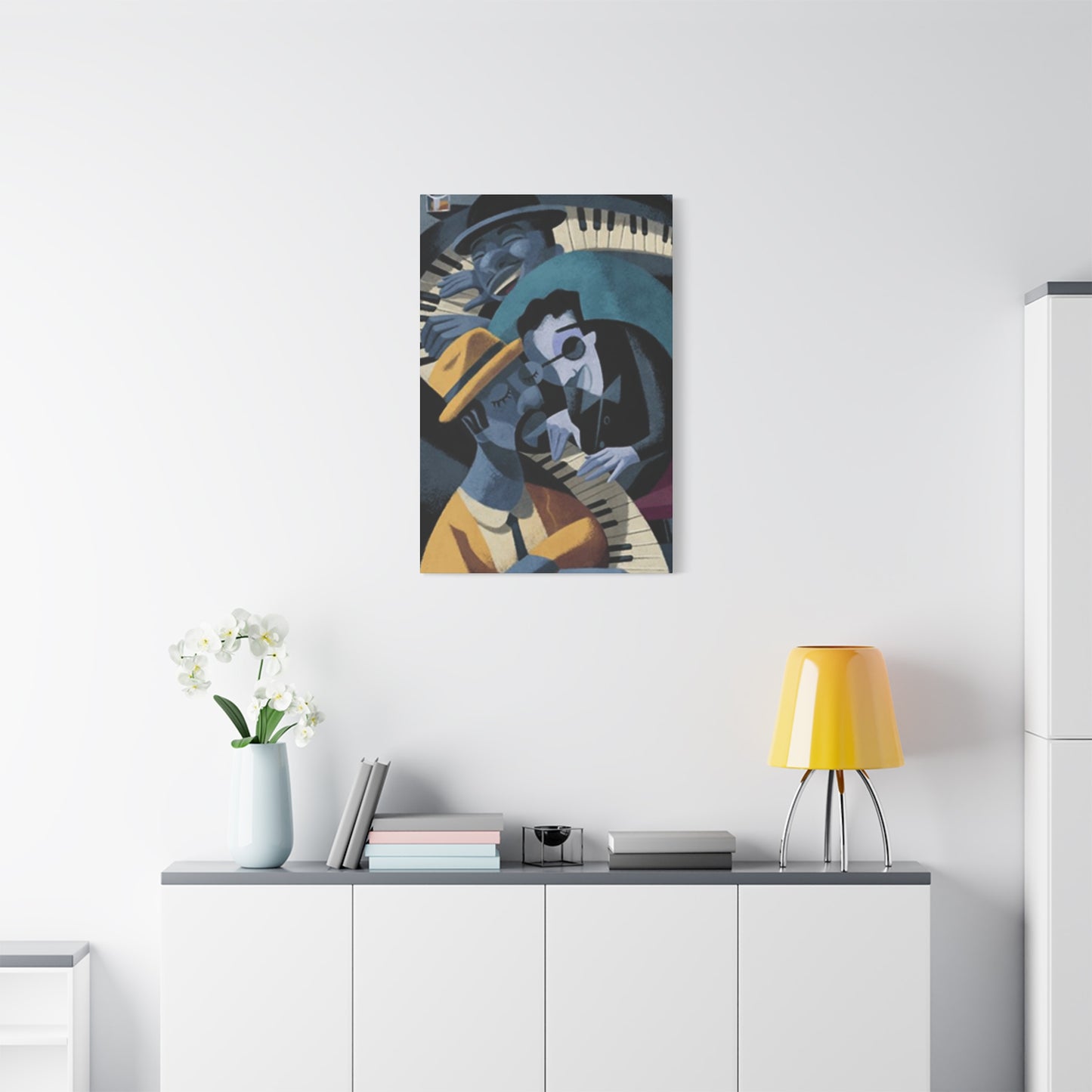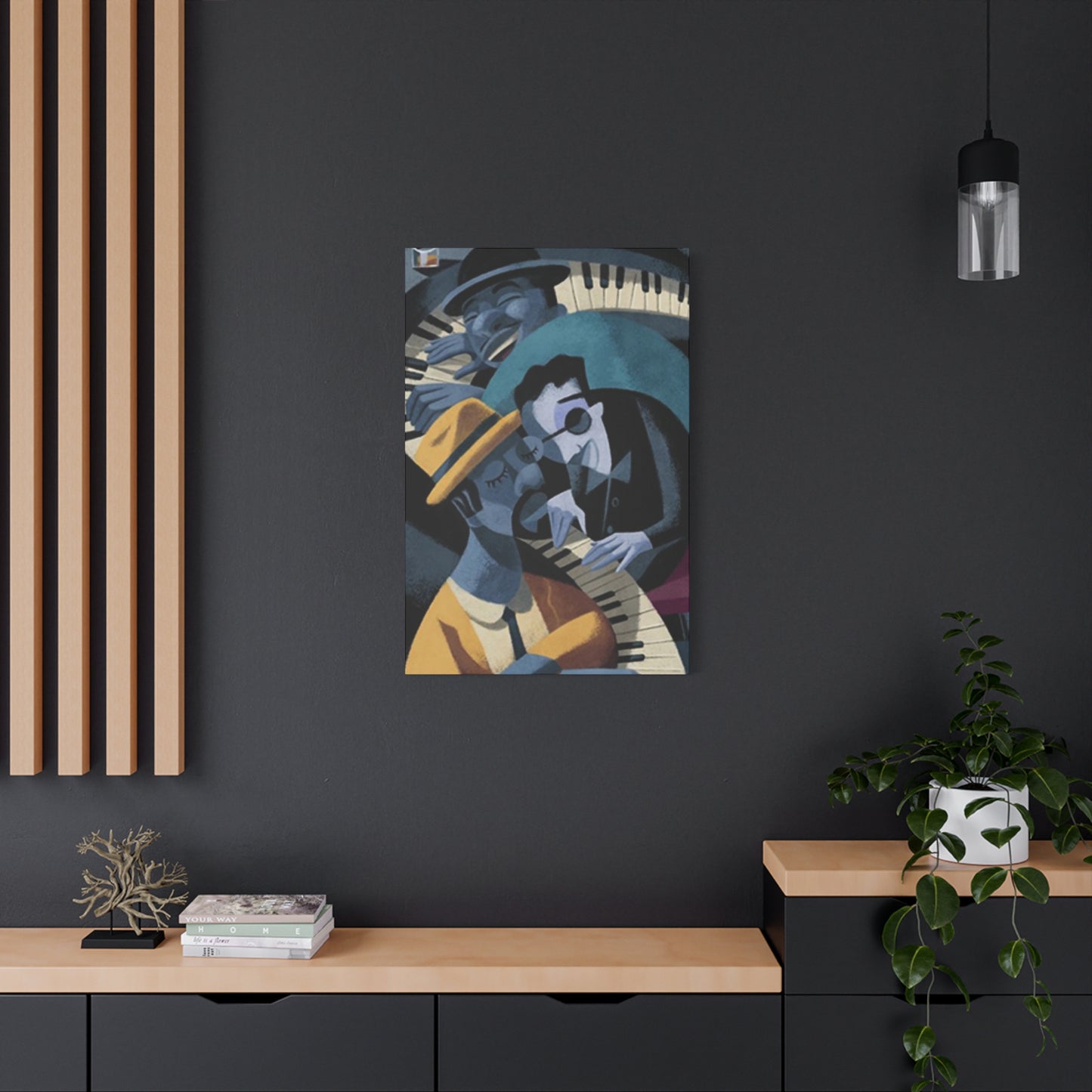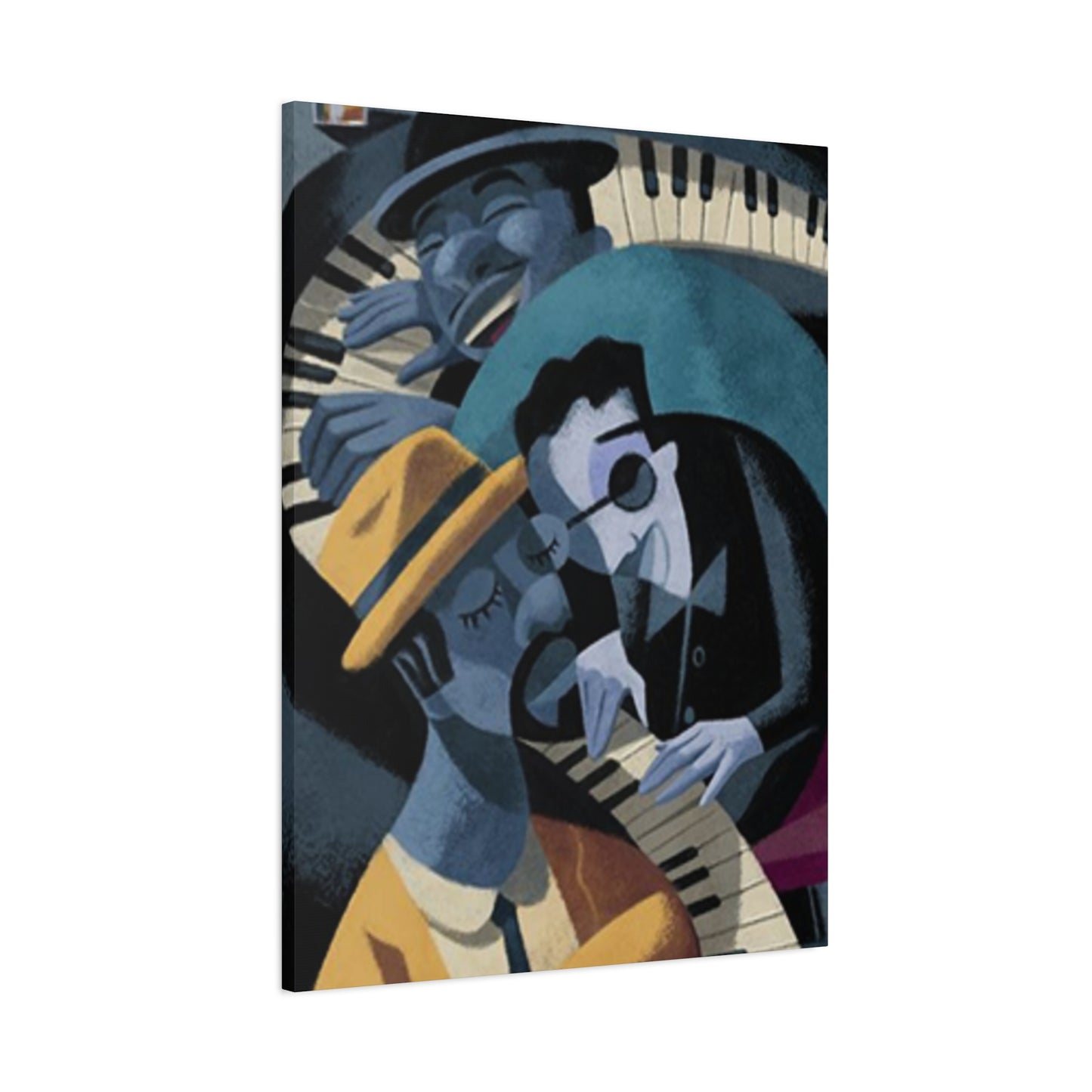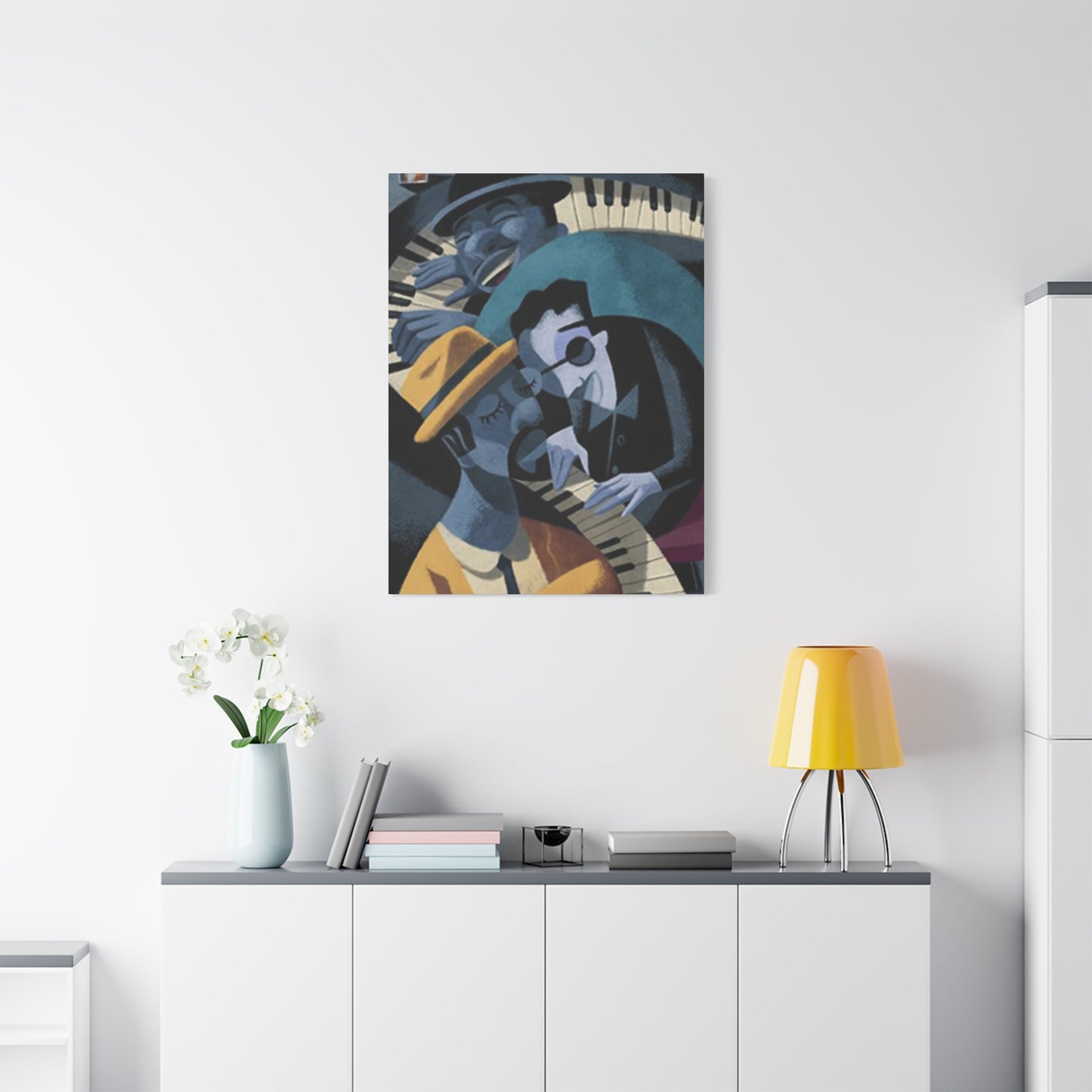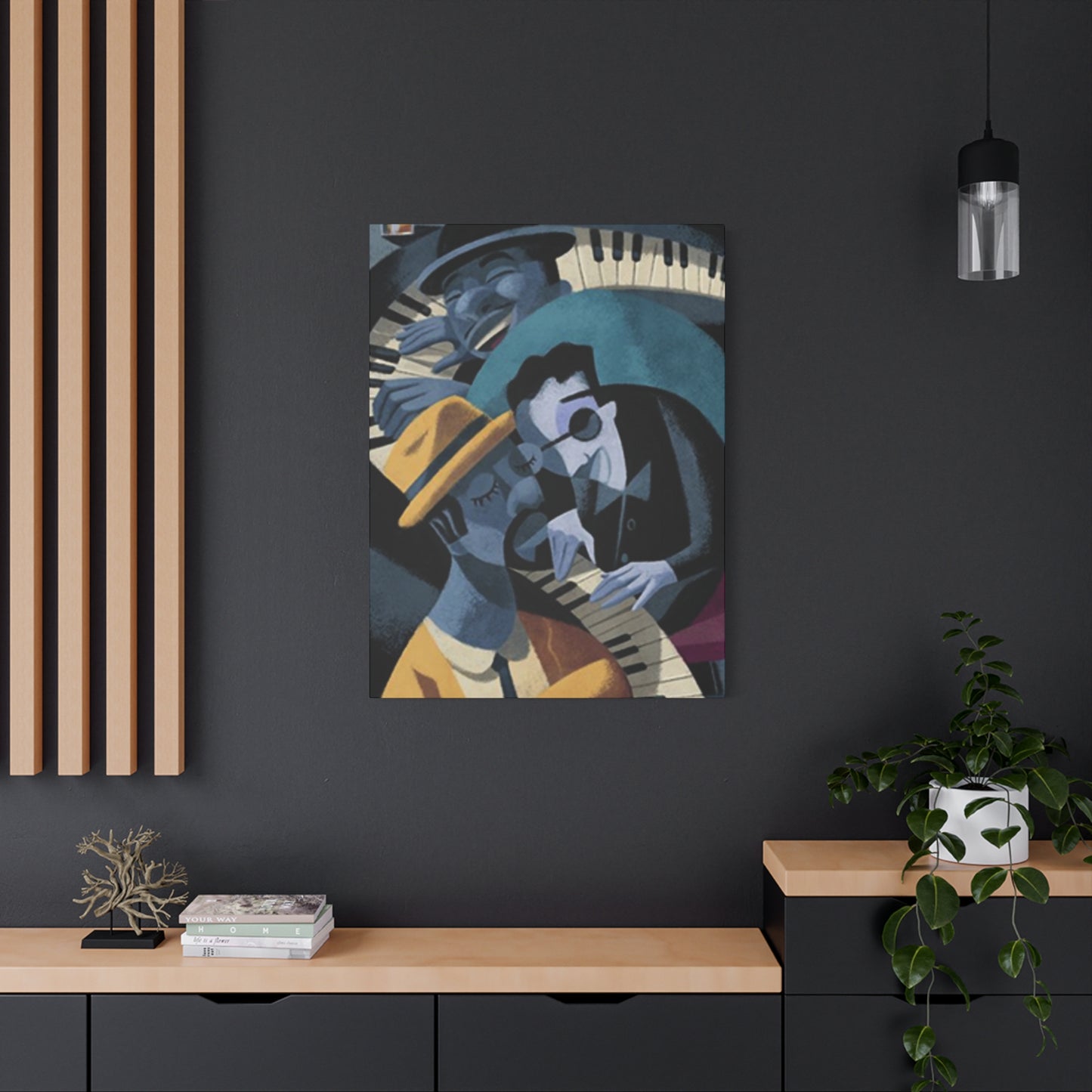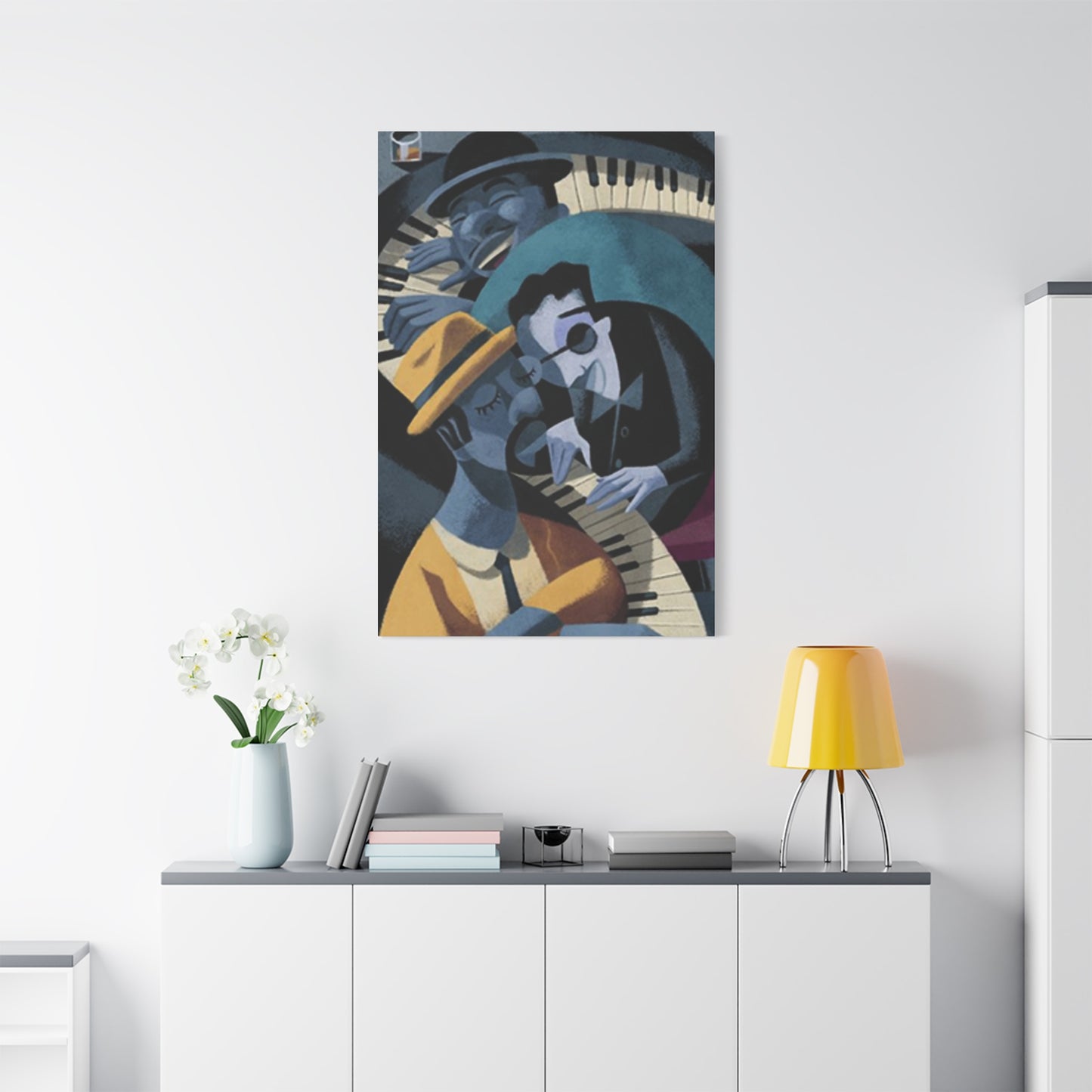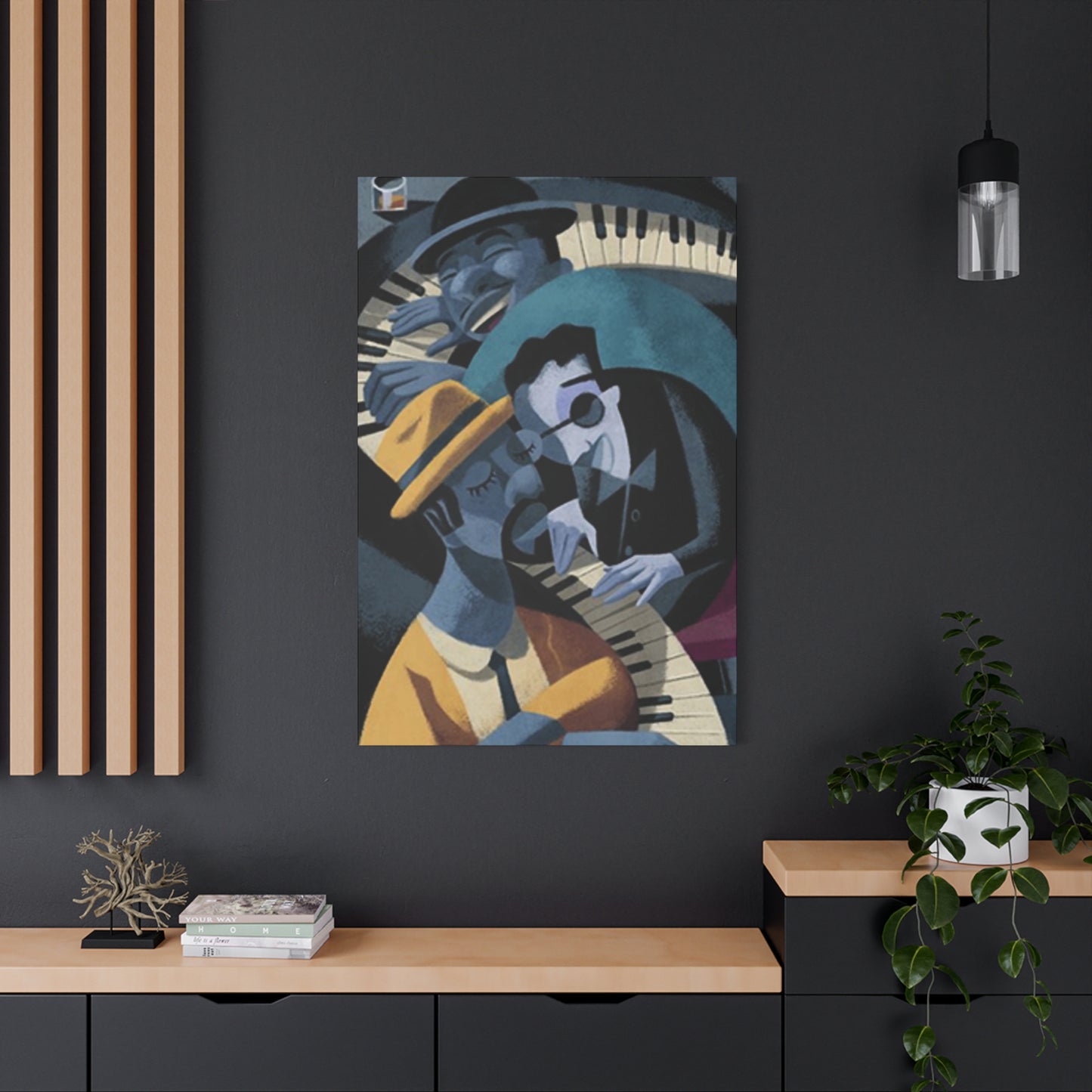Creative Cartoon Piano Wall Art: Enhancing Your Space with Musical Animation
The enchanting world of cartoon piano wall art represents a delightful fusion of musical passion and animated creativity that has captured the hearts of art enthusiasts worldwide. This captivating art form combines the timeless appeal of animated characters with the sophisticated elegance of musical instruments, creating pieces that resonate with both children and adults alike. The growing popularity of cartoon piano artwork stems from its ability to inject personality, whimsy, and musical inspiration into any living space while maintaining an air of artistic sophistication.
Modern interior design has embraced the concept of personalized wall art as a means of self-expression, and cartoon piano pieces have emerged as particularly versatile options for various settings. Whether adorning the walls of a child's playroom, a musician's studio, or a sophisticated living area, these animated musical artworks serve as conversation starters and sources of daily inspiration. The unique combination of visual storytelling and musical themes creates an emotional connection that traditional artwork often struggles to achieve.
The artistic movement surrounding cartoon piano wall art has evolved significantly over recent decades, influenced by classic animation studios, contemporary digital artists, and the increasing democratization of art creation tools. This evolution has led to an incredibly diverse range of styles, from vintage-inspired pieces reminiscent of golden age animation to modern, minimalist interpretations that appeal to contemporary aesthetic sensibilities. The accessibility of digital design tools has enabled both professional artists and enthusiastic amateurs to contribute to this growing artistic genre.
Understanding the various applications and benefits of cartoon piano wall art requires exploring its multifaceted nature. These pieces serve not only as decorative elements but also as educational tools, mood enhancers, and creative catalysts. The psychological impact of combining beloved cartoon characters with musical instruments creates positive associations that can inspire creativity, reduce stress, and foster a love of music in viewers of all ages.
The market for cartoon piano wall art has experienced remarkable growth, driven by increasing consumer interest in personalized home decor and the nostalgic appeal of animated characters. This demand has resulted in a wide variety of available options, from hand-painted originals to high-quality prints, custom commissions to mass-produced pieces. The diversity in pricing and styles ensures that cartoon piano art remains accessible to collectors with varying budgets and aesthetic preferences.
Contemporary artists working in this genre draw inspiration from numerous sources, including classic animation films, popular cartoon series, musical history, and cultural movements. This rich tapestry of influences results in artwork that often contains multiple layers of meaning and reference, appealing to viewers on both emotional and intellectual levels. The interplay between visual and musical elements creates opportunities for artistic interpretation that extend far beyond simple decoration.
The therapeutic benefits of cartoon piano wall art should not be underestimated. Research in environmental psychology suggests that artwork featuring familiar, positive imagery can significantly impact mood and well-being. The combination of beloved cartoon characters and musical instruments often evokes feelings of nostalgia, joy, and creative inspiration, making these pieces particularly effective in spaces where emotional well-being is prioritized, such as therapy offices, children's hospitals, or healing environments.
Handcrafted Cartoon Piano Art Creation Projects
Creating your own cartoon piano wall art represents one of the most rewarding ways to personalize your living space while developing artistic skills and expressing creativity. The process of designing and crafting these pieces allows for complete customization, ensuring that the final artwork perfectly matches your vision and space requirements. Handmade cartoon piano art projects can range from simple sketches suitable for beginners to complex multimedia installations that challenge experienced artists.
Starting with basic materials such as canvas boards, acrylic paints, and drawing supplies, aspiring artists can begin their journey into cartoon piano art creation with minimal investment. The key to successful handcrafted pieces lies in understanding the fundamental principles of cartoon character design and musical instrument representation. Beginning artists should focus on developing clean line work, understanding proportions, and mastering color theory basics before attempting more complex compositions.
Digital creation tools have revolutionized the accessibility of cartoon piano art production, allowing artists to experiment with designs, colors, and compositions without the commitment of traditional media. Software applications such as digital painting programs, vector graphics editors, and even smartphone apps provide powerful platforms for creating professional-quality cartoon piano artwork. The advantage of digital creation includes the ability to make unlimited revisions, experiment with different color schemes, and easily resize artwork for various applications.
Mixed media approaches to cartoon piano art creation offer exciting possibilities for texture, depth, and visual interest. Combining traditional drawing or painting techniques with collage elements, fabric, or three-dimensional components can result in truly unique pieces that stand out from conventional wall art. These approaches allow artists to incorporate actual musical elements such as sheet music fragments, piano key replicas, or miniature instrument parts into their compositions.
The planning phase of any cartoon piano art project should include consideration of the intended display location, viewing distance, and surrounding decor elements. Sketching preliminary designs and creating color studies helps ensure that the final piece will integrate harmoniously with its environment while maintaining its distinctive character. Artists should also consider the emotional impact they wish to achieve, whether aiming for whimsical playfulness, sophisticated elegance, or nostalgic warmth.
Collaboration projects involving multiple artists or family members can result in particularly meaningful cartoon piano artworks. Children can contribute character ideas or color suggestions while adults handle more technical aspects of composition and execution. These collaborative efforts often produce pieces with unique charm and personal significance that cannot be replicated through individual creation or purchase of commercial artwork.
Advanced techniques for cartoon piano art creation might include incorporating lighting elements, creating three-dimensional sculptures, or developing interactive components. LED backlighting can enhance the visual impact of translucent materials, while dimensional elements add physical presence to wall-mounted pieces. Interactive features such as sound elements or moveable parts can transform static artwork into engaging installations that invite viewer participation.
Documentation of the creation process through photography or video can add value to handcrafted cartoon piano artworks, particularly for pieces intended as gifts or portfolio additions. This documentation not only preserves the creative journey but also provides educational material for others interested in similar projects. Sharing creation processes through social media or art communities can inspire others while building connections with fellow cartoon piano art enthusiasts.
Classic Animation on Piano-Themed Art
The profound influence of classic cartoons on contemporary piano art cannot be overstated, as these foundational animated works established visual languages and character archetypes that continue to inspire artists today. The golden age of animation, spanning from the 1930s through the 1960s, produced countless memorable scenes featuring pianos, musical performances, and anthropomorphized instruments that have become cultural touchstones. These classic sequences created lasting associations between animation and musical expression that artists continue to reference and reinterpret in modern cartoon piano wall art.
Early animated films frequently featured elaborate musical numbers that showcased pianos as central narrative elements, often portraying them as magical instruments capable of transforming environments and inspiring characters. The visual representation of music through animation required artists to develop creative techniques for showing sound, rhythm, and musical emotion through purely visual means. These innovative approaches established conventions for depicting musical instruments in animated contexts that remain influential in contemporary cartoon piano art creation.
The character design principles established by classic animation studios continue to influence modern cartoon piano artwork, particularly in terms of proportional exaggeration, expressive facial features, and dynamic body language. Characters interacting with pianos in classic cartoons often displayed exaggerated emotional responses that enhanced the comedic or dramatic impact of musical sequences. These expressive techniques translate effectively to static wall art, allowing artists to capture the energy and emotion of musical performance in single images.
Color palettes and artistic styles developed during the classic animation era have experienced periodic revivals in cartoon piano art, as contemporary artists draw inspiration from the distinctive visual aesthetics of different decades. The sophisticated use of color in classic animated musicals demonstrated how visual elements could enhance musical storytelling, providing valuable lessons for modern artists creating cartoon piano wall art. Understanding these historical color relationships helps contemporary artists create pieces that evoke specific emotional responses or nostalgic feelings.
The technical innovations of classic animation, including multiplane camera techniques and sophisticated background art, established precedents for creating depth and atmosphere in cartoon piano scenes. These techniques translate to static artwork through the use of layered compositions, atmospheric perspective, and detailed background elements that support the central piano and character elements. Modern artists can study these classic techniques to enhance the visual sophistication of their cartoon piano wall art.
Character archetypes established in classic animation continue to appear in contemporary cartoon piano art, including the virtuoso performer, the reluctant student, the magical piano, and the anthropomorphized instrument itself. These recurring characters provide familiar reference points for viewers while offering endless possibilities for creative reinterpretation. Understanding the psychological appeal of these classic archetypes helps artists create cartoon piano artwork that resonates with diverse audiences.
The storytelling techniques pioneered in classic animated musical sequences offer valuable insights for artists creating narrative cartoon piano wall art. Single images can suggest complete stories through careful composition, character positioning, and environmental details. Classic animation demonstrated how visual elements could convey musical rhythm, timing, and emotional progression, techniques that static artists can adapt to create dynamic and engaging cartoon piano artwork.
The preservation and restoration of classic animated works has provided contemporary artists with high-quality reference materials for studying historical techniques and aesthetics. Digital restoration technologies have revealed details and color relationships that were previously difficult to analyze, offering new insights into the artistic decisions that made classic cartoon piano sequences so memorable and influential.
Sourcing Distinctive Cartoon Piano Canvas Art
Finding unique cartoon piano canvas prints requires understanding the diverse marketplace of contemporary art reproduction and the various channels through which original and limited-edition pieces become available. The landscape of cartoon piano art sourcing includes traditional art galleries, online marketplaces, independent artist websites, print-on-demand services, and specialty retailers focusing on musical or cartoon-themed artwork. Each source offers distinct advantages in terms of quality, price, selection, and exclusivity.
Online art marketplaces have become increasingly sophisticated in their curation and search capabilities, allowing collectors to filter results based on specific criteria such as size, color scheme, artistic style, and price range. These platforms often feature independent artists from around the world, providing access to unique cartoon piano designs that might not be available through traditional retail channels. The advantage of these marketplaces includes direct communication with artists, potential for custom modifications, and often more reasonable pricing than gallery representations.
Specialized print services offer the advantage of producing cartoon piano artwork on various canvas types and sizes, often with options for different finishing techniques such as gallery wraps, traditional frames, or museum-quality mounting. These services typically provide detailed specifications regarding print resolution, color accuracy, and longevity, ensuring that the final product meets professional standards. Understanding the differences between various printing technologies and canvas materials helps buyers make informed decisions about quality and durability.
Art fairs and craft shows provide opportunities to discover emerging artists working in the cartoon piano genre while offering the advantage of viewing pieces in person before purchase. These events often feature artists who specialize in music-themed artwork or cartoon illustrations, providing concentrated sources for unique pieces. The personal interaction with artists at these events can lead to custom commissions or modifications to existing designs.
Gallery representations of cartoon piano artists typically offer higher-end pieces with established provenance and professional presentation. While these sources may command premium pricing, they often provide advantages such as authentication, insurance, and potential investment value. Understanding the gallery system and building relationships with curators interested in cartoon or musical artwork can provide access to exclusive pieces and advance notice of new acquisitions.
Social media platforms have become increasingly important for discovering and purchasing unique cartoon piano canvas art, as artists use these channels to showcase their work and connect directly with potential buyers. Following hashtags related to cartoon art, piano art, or musical themes can lead to discovery of emerging artists and limited-edition releases. The interactive nature of social media also allows for engagement with artists and insight into their creative processes.
Vintage and antique sources occasionally yield unique cartoon piano artwork from earlier eras, particularly pieces created for commercial purposes such as music store advertisements or promotional materials. These sources require patience and persistence but can result in truly distinctive pieces with historical significance. Understanding the difference between original vintage pieces and modern reproductions is crucial when pursuing this collecting avenue.
Custom commission services provide the ultimate in unique cartoon piano canvas art, allowing collectors to collaborate with artists in creating pieces that perfectly match their vision and space requirements. This approach typically requires more time and investment but results in completely original artwork that cannot be duplicated. Establishing clear communication with commissioned artists regarding expectations, timelines, and revision processes is essential for successful outcomes.
Professional Framing Techniques for Animated Piano Artwork
The presentation of cartoon piano wall art through proper framing significantly impacts both the aesthetic appeal and longevity of the artwork, requiring careful consideration of materials, styles, and conservation techniques. Professional framing for cartoon piano art involves balancing the playful, colorful nature of the artwork with presentation standards that enhance rather than overwhelm the visual impact. The framing choices should complement the artistic style while providing adequate protection and visual emphasis.
Understanding the various framing styles available for cartoon piano artwork helps collectors make informed decisions that enhance their pieces without compromising the artistic integrity. Traditional frames with ornate detailing might overwhelm the whimsical nature of cartoon piano art, while extremely modern minimalist frames might fail to provide adequate visual support. The key lies in finding frames that echo the artistic spirit of the piece while maintaining professional presentation standards.
Matting considerations for cartoon piano art require attention to color relationships, visual breathing room, and conservation concerns. The mat serves as both a protective barrier and a visual transition between the artwork and frame, making color selection crucial to the overall presentation. Multiple mat layers can create sophisticated presentation effects while providing additional protection for the artwork. Acid-free materials are essential for preventing long-term deterioration of both the artwork and matting materials.
Glazing options for framed cartoon piano art include various types of glass and acrylic materials, each offering different benefits in terms of protection, clarity, and cost. Museum-quality glazing materials provide superior protection against ultraviolet light damage while maintaining exceptional clarity. Anti-reflective coatings can significantly improve viewing experience, particularly important for cartoon piano art that features bright colors and fine details that might be obscured by glare.
Conservation framing techniques become particularly important for original cartoon piano artwork or pieces with investment potential. These methods involve using materials and techniques that prevent deterioration while allowing for future conservation treatments if necessary. Understanding the principles of conservation framing helps collectors make decisions that will preserve their cartoon piano art for future generations while maintaining its visual impact.
The sizing and proportional relationships between artwork, matting, and frames require careful consideration to achieve optimal visual balance. Cartoon piano art often features dynamic compositions that benefit from generous matting to provide visual breathing room, while the frame should complement rather than compete with the artwork for attention. Understanding basic principles of visual proportion helps in making framing decisions that enhance the artwork's impact.
Installation considerations for framed cartoon piano art include wall preparation, hanging hardware selection, and positioning for optimal viewing and protection. Proper hanging techniques ensure both security and preservation while allowing for future repositioning if needed. Consideration of lighting conditions, humidity levels, and traffic patterns in the display area helps optimize both the preservation and enjoyment of framed cartoon piano artwork.
Custom framing options allow for personalized presentation solutions that can incorporate thematic elements related to music or animation. These might include specialty mat cuts that echo piano key patterns, frames made from materials with musical significance, or mounting techniques that enhance the three-dimensional qualities of certain pieces. Working with experienced framers familiar with art presentation ensures professional results that enhance the value and impact of cartoon piano wall art.
Merging Musical and Animated Design Elements in Interior Decoration
The successful integration of cartoon piano wall art into broader interior design schemes requires understanding how to balance whimsical animated elements with sophisticated musical themes while maintaining overall aesthetic coherence. This integration process involves considering color relationships, thematic consistency, and the emotional atmosphere desired in the space. The goal is creating environments where cartoon piano art enhances rather than conflicts with existing design elements while maintaining its distinctive character and appeal.
Color coordination strategies for incorporating cartoon piano art into established interior color schemes require understanding both the dominant colors in the artwork and the existing palette of the space. Cartoon piano art often features vibrant, playful colors that can serve as accent elements in more subdued environments or integrate seamlessly into already colorful spaces. The key lies in identifying connecting colors that allow the artwork to feel integrated rather than jarring within the overall design scheme.
Thematic consistency can be achieved by incorporating complementary musical or artistic elements throughout the space, creating a cohesive narrative that supports the cartoon piano artwork. This might include subtle references to music through accessories, lighting fixtures that echo piano or cartoon themes, or furniture pieces that complement the artistic style. The goal is creating an environment where the cartoon piano art feels intentional rather than randomly placed.
Scale and proportion considerations become crucial when integrating cartoon piano art into various room sizes and architectural contexts. Large-scale cartoon piano pieces can serve as focal points in spacious rooms, while smaller pieces might work better in intimate spaces or as part of gallery wall arrangements. Understanding how the visual weight of cartoon piano art relates to other elements in the room helps create balanced, harmonious environments.
Lighting design plays a crucial role in showcasing cartoon piano wall art while maintaining overall room functionality and atmosphere. Accent lighting can enhance the visual impact of the artwork while general room lighting should complement rather than compete with the piece. Understanding how different lighting conditions affect the colors and details in cartoon piano art helps in creating optimal viewing experiences throughout different times of day.
Furniture placement and room layout should consider the viewing angles and distances optimal for appreciating cartoon piano wall art while maintaining functional traffic flow and furniture arrangements. The artwork should be positioned to take advantage of natural focal points in the room while remaining visible and accessible for close examination. Creating clear sightlines to cartoon piano art enhances its impact as both decorative and inspirational elements.
Texture relationships between cartoon piano art and surrounding materials can either enhance or diminish the overall aesthetic impact. The typically smooth surfaces of canvas or paper prints might benefit from contrast with textured wall surfaces, fabrics, or furnishings, while maintaining enough visual coherence to feel intentional. Understanding these texture relationships helps create more sophisticated and visually interesting environments.
Seasonal and temporal considerations for cartoon piano art integration might include the ability to rotate pieces, adjust lighting, or modify surrounding accessories to maintain freshness and interest. Some cartoon piano artwork might be more appropriate for certain seasons or occasions, and designing flexible display systems allows for these variations while maintaining overall design integrity.
The Magnetic Draw of Cartoon Piano Art for Musical Enthusiasts
Musical enthusiasts find particular resonance in cartoon piano wall art because these pieces combine their passion for music with the universal appeal of animated storytelling, creating emotional connections that extend beyond simple visual appreciation. The psychological appeal lies in the way cartoon piano art can simultaneously evoke memories of beloved animated characters and inspire musical creativity, making these pieces especially meaningful for individuals whose lives revolve around musical expression and appreciation.
The educational value of cartoon piano art for music enthusiasts extends beyond simple decoration to include visual representations of musical concepts, instrument techniques, and performance emotions. Many cartoon piano pieces subtly incorporate accurate musical details such as proper hand positioning, realistic instrument proportions, or references to specific musical genres or historical periods. These educational elements provide ongoing interest and discovery opportunities for viewers with musical knowledge and training.
Inspirational qualities of cartoon piano art serve as daily motivation for musicians and music lovers, providing visual reminders of the joy, creativity, and expressive possibilities inherent in musical pursuits. The whimsical nature of cartoon elements combined with the sophistication of piano imagery creates a balanced representation of music as both serious art form and source of personal enjoyment. This balance resonates particularly strongly with music enthusiasts who understand both aspects of musical engagement.
The nostalgic appeal of cartoon piano art often connects with childhood memories of musical education, animated films featuring musical themes, or early experiences with piano playing. These emotional connections can provide powerful motivation for continued musical engagement while serving as conversation starters with fellow music enthusiasts. The shared cultural references embedded in cartoon piano art create immediate bonds between viewers who recognize specific characters, musical styles, or artistic techniques.
Professional musicians often appreciate cartoon piano art as a way to express their musical identity in personal spaces without the seriousness or expense associated with traditional musical artwork. The playful nature of cartoon elements provides emotional balance to the intense focus required in professional musical pursuits while maintaining clear connections to their artistic passion. This balance makes cartoon piano art particularly appealing for music studios, practice rooms, and performance spaces.
The accessibility of cartoon piano art makes it particularly valuable for music enthusiasts who may not have access to or budget for original musical instruments, rare musical artifacts, or expensive traditional musical artwork. These pieces provide affordable ways to surround oneself with musical inspiration while expressing personality and artistic preferences. The wide range of available styles and price points ensures that cartoon piano art remains accessible to music enthusiasts across various economic circumstances.
Community building aspects of cartoon piano art collecting often appeal to musical enthusiasts who appreciate opportunities to connect with others who share their interests. Online communities, local collector groups, and artist networks provide platforms for sharing discoveries, discussing artistic techniques, and connecting over shared appreciation for both music and animation. These communities often extend beyond simple collecting to include musical collaboration and creative inspiration.
The therapeutic benefits of cartoon piano art for music enthusiasts include stress reduction, creative inspiration, and emotional regulation through visual engagement with positive musical imagery. The combination of familiar cartoon characters and musical instruments creates comforting, uplifting visual experiences that can provide emotional support during challenging periods or enhance positive moods during successful times. This therapeutic value makes cartoon piano art particularly valuable for music enthusiasts who experience the emotional highs and lows common in musical careers.
Developing Cohesive Gallery Displays with Piano-Themed Animation
Creating effective gallery walls featuring piano-themed cartoon art requires careful planning of spatial relationships, visual flow, and thematic coherence while maintaining individual piece integrity and overall aesthetic balance. The process involves understanding how multiple pieces interact visually, how viewers navigate gallery wall arrangements, and how to create compelling narratives through artwork selection and placement. Successful gallery walls enhance both individual pieces and the collective impact of the entire arrangement.
Planning the layout of a cartoon piano gallery wall begins with assessing the available wall space, existing architectural features, and viewing conditions such as lighting and traffic patterns. The goal is creating an arrangement that feels intentional and balanced while accommodating the unique characteristics of each individual piece. This planning phase should include consideration of future additions or modifications to maintain flexibility as collections grow or spaces change.
Size relationships between pieces in cartoon piano gallery walls require careful consideration to achieve visual balance without monotony. Mixing different sizes creates visual interest and allows for hierarchical arrangements that guide viewer attention through the display. The largest pieces often serve as anchor points, with smaller pieces arranged to create supporting visual relationships and rhythmic patterns across the wall surface.
Color coordination across multiple cartoon piano pieces involves identifying connecting elements that allow diverse artworks to coexist harmoniously while maintaining their individual character. This might involve pieces that share similar color palettes, complementary color relationships, or strategic placement that creates pleasing visual transitions across the gallery wall. Understanding color theory helps in making placement decisions that enhance rather than compete between pieces.
Thematic threads running through cartoon piano gallery walls can include artistic style consistency, character types, musical genres, historical periods, or emotional themes. These connecting elements provide coherence while allowing for sufficient variety to maintain visual interest. The key is finding the right balance between unity and diversity to create gallery walls that reward both quick viewing and detailed examination.
Spacing and visual breathing room between pieces affects how viewers perceive and process the gallery wall arrangement. Too little space can create visual confusion, while too much space might make the arrangement feel disconnected. Understanding optimal spacing relationships helps create gallery walls that feel cohesive while allowing each piece adequate visual territory. These spacing decisions also affect the overall scale and impact of the gallery wall within the room.
Lighting considerations for cartoon piano gallery walls include both general illumination and accent lighting that enhances individual pieces without creating glare or uneven viewing conditions. The goal is creating lighting that supports the colors and details in cartoon piano art while maintaining comfortable viewing throughout different times of day. Professional lighting design can significantly enhance the impact of gallery wall arrangements.
Installation techniques for gallery wall arrangements require careful attention to hanging hardware, wall preparation, and leveling to achieve professional-looking results. The installation process should accommodate potential future changes while ensuring security and preservation of the artwork. Using appropriate hanging systems and planning for wall protection helps maintain both the artwork and the wall surface in good condition.
Evolution and maintenance of cartoon piano gallery walls involves planning for periodic refreshing, seasonal changes, or accommodation of new acquisitions. Successful gallery walls are dynamic arrangements that can adapt to changing preferences, collections, and circumstances while maintaining their essential character and appeal. Building flexibility into the initial design allows for these natural changes without requiring complete reorganization.
Color Psychology in Animated Piano Artwork
The strategic use of color in cartoon piano wall art significantly influences emotional response, mood enhancement, and psychological impact on viewers, making color selection a crucial consideration for both artists and collectors. Understanding color psychology principles helps in choosing pieces that will achieve desired emotional effects within specific environments while maintaining aesthetic appeal and artistic integrity. The vibrant nature of cartoon art combined with the sophisticated associations of piano imagery creates unique opportunities for emotional engagement through color.
Warm color palettes in cartoon piano art, including reds, oranges, and yellows, tend to create energetic, welcoming, and stimulating environments that can inspire creativity and social interaction. These colors often appear in cartoon piano pieces designed for children's spaces, music rooms, or areas where active engagement and enthusiasm are desired. The psychological impact of warm colors can help counterbalance the sometimes serious associations with piano practice and musical study.
Cool color schemes featuring blues, greens, and purples in cartoon piano artwork create calming, sophisticated, and contemplative atmospheres that support focused activities and relaxation. These color palettes work particularly well in adult spaces, professional environments, or areas designated for practice and concentration. The cooling effect of these colors can provide visual relief in high-energy environments while maintaining connection to musical themes.
Neutral color applications in cartoon piano art, including grays, beiges, and muted tones, offer versatility and sophistication while allowing the artwork to integrate seamlessly into diverse interior design schemes. These pieces often appeal to collectors who appreciate subtle artistic statements or who need artwork that won't compete with existing color schemes. Neutral cartoon piano art can serve as foundation pieces in gallery walls or as sophisticated accents in professional environments.
Contrasting color relationships within individual cartoon piano pieces create visual dynamism and emotional complexity that can enhance the storytelling aspects of the artwork. High contrast combinations might suggest drama, conflict, or excitement, while low contrast approaches create harmony, unity, and calm. Understanding these contrast relationships helps collectors choose pieces that will achieve their desired emotional impact.
Seasonal color associations in cartoon piano art can provide opportunities for rotating displays or selecting pieces that complement natural light changes throughout the year. Spring palettes featuring fresh greens and bright colors, autumn schemes with warm oranges and browns, or winter combinations of blues and whites can help interior spaces feel connected to natural cycles while maintaining musical themes.
Cultural color meanings and associations should be considered when selecting cartoon piano art for diverse environments or international audiences. Different cultures associate various emotions and meanings with specific colors, and understanding these differences can help in choosing pieces that will be universally appealing or specifically appropriate for particular cultural contexts. This consideration becomes particularly important in educational or commercial settings.
Color harmony principles from traditional art theory apply to cartoon piano art selection and arrangement, helping collectors create visually satisfying combinations when displaying multiple pieces. Understanding concepts such as complementary colors, analogous schemes, and triadic relationships provides tools for creating sophisticated color relationships that enhance both individual pieces and overall display effectiveness.
The longevity of color choices in cartoon piano art involves considering how color preferences and trends may change over time while selecting pieces that will remain visually appealing and emotionally relevant. Classic color combinations often provide more lasting appeal than highly trendy palettes, making them safer investments for collectors interested in long-term satisfaction with their cartoon piano art selections.
Cartoon Piano Art for Young Learners
Cartoon piano wall art serves as powerful educational tools for children by combining visual appeal with musical learning opportunities, creating engaging environments that support both formal instruction and informal discovery. The psychological appeal of animated characters paired with musical instruments creates positive associations that can overcome common barriers to musical education such as intimidation, boredom, or perceived difficulty. These educational applications extend beyond simple decoration to include active learning support and inspiration for musical engagement.
Music theory concepts can be reinforced through carefully selected cartoon piano artwork that incorporates accurate representations of musical elements such as notes, scales, rhythm patterns, or keyboard layouts. Children often learn more effectively through visual reinforcement of abstract concepts, and cartoon piano art provides memorable, accessible representations of musical ideas. The whimsical presentation makes complex musical concepts less intimidating while maintaining educational accuracy.
Character identification and storytelling aspects of cartoon piano art provide opportunities for creative writing, imaginative play, and narrative development exercises that enhance learning across multiple subjects. Children can create stories about the characters in the artwork, imagine musical adventures, or develop scripts for dramatic play involving pianos and music. These creative extensions help reinforce musical concepts while developing language and creative thinking skills.
Practice motivation enhancement through cartoon piano art occurs when children develop emotional connections with characters depicted in musical situations, inspiring them to emulate the positive musical experiences shown in the artwork. Seeing beloved cartoon characters enjoying piano playing or musical performance can provide encouragement during challenging practice periods and help maintain long-term interest in musical study.
Instrument recognition and familiarity development benefits from cartoon piano art that accurately depicts piano construction, key arrangements, and playing techniques. Children who might not have access to real pianos can develop visual familiarity with instrument details through repeated exposure to accurate artistic representations. This familiarity can ease the transition to actual instrument interaction when opportunities arise.
Social and emotional learning opportunities emerge from cartoon piano art that depicts collaborative music-making, performance situations, or emotional expression through musical activities. Children can discuss the emotions expressed by characters in the artwork, explore concepts of cooperation and individual expression, and develop understanding of music as communication. These discussions support emotional intelligence development alongside musical awareness.
Cross-curricular connections between music and other subjects can be explored through cartoon piano art that incorporates historical references, cultural elements, mathematical concepts, or scientific principles related to sound and music production. Teachers can use these artworks as starting points for integrated lessons that demonstrate how music connects to broader learning objectives while maintaining student engagement through appealing visual presentations.
Assessment and progress documentation opportunities arise when children create their own cartoon piano artwork as responses to musical learning experiences or as expressions of their musical understanding. These creative products provide teachers and parents with insights into children's musical comprehension while giving children opportunities to demonstrate learning through artistic expression rather than traditional testing methods.
Special needs accommodation through cartoon piano art includes providing visual supports for children with learning differences, offering non-threatening musical engagement opportunities for children with performance anxiety, and creating inclusive environments where all children can connect with musical concepts regardless of their individual challenges or abilities.
Exploring Comedic Elements in Piano-Themed Animation
The use of humor in piano-themed cartoon art serves multiple functions beyond simple entertainment, including stress relief, memory enhancement, and creating positive associations with musical activities that can last throughout a viewer's lifetime. Understanding the various types of humor employed in cartoon piano artwork helps collectors appreciate the sophisticated artistic techniques required to create effective comedic pieces while recognizing the psychological benefits that humorous artwork can provide in various environments.
Visual gags and physical comedy elements in cartoon piano art often involve exaggerated character reactions to musical situations, impossible physical scenarios, or anthropomorphized instruments displaying human behaviors. These visual jokes require careful timing and composition to achieve maximum impact in static artwork, demonstrating the skill required to translate animated comedy techniques into still images. The best comedic cartoon piano art captures the essence of movement and timing even in static form.
Character-based humor in cartoon piano artwork typically involves recognizable personality types such as the overly enthusiastic teacher, the reluctant student, the show-off performer, or the magical piano that acts independently. These archetypal characters provide immediate comedic context that viewers can understand without additional explanation, making the artwork accessible to diverse audiences while maintaining humor that works on multiple levels.
Situational comedy scenarios depicted in cartoon piano art might include practice session disasters, performance mishaps, or everyday situations where pianos appear in unexpected contexts. These scenarios often derive humor from the contrast between the dignified associations of piano music and the chaotic or absurd situations depicted in the artwork. The effectiveness of situational comedy in static art depends on clear visual storytelling and relatable scenarios.
Musical humor and music-theory jokes in cartoon piano artwork appeal particularly to viewers with musical knowledge and training, providing insider references that create additional layers of appreciation for musically educated audiences. These might include visual puns on musical terminology, references to famous compositions or composers, or jokes about common musical experiences such as practice frustrations or performance anxiety.
Timing and rhythm concepts from musical comedy translate to visual art through the use of visual rhythm, repetition, and pattern that create comedic effects even in static images. Understanding how musical timing relates to visual composition helps artists create cartoon piano artwork that feels musically appropriate while maintaining comedic impact. These sophisticated techniques often distinguish professional-quality comedic art from amateur attempts.
Cultural and generational humor references in cartoon piano art can provide shared experiences for specific audiences while potentially creating barriers for others who don't share the same cultural background or references. Successful comedic cartoon piano art often balances specific cultural references with universal humor that can appeal across diverse audiences, ensuring broader accessibility and lasting appeal.
The therapeutic value of humorous cartoon piano art includes stress reduction, mood improvement, and creating positive associations with musical activities that might otherwise cause anxiety or frustration. Laughter and positive emotions associated with viewing comedic artwork can provide emotional support for music students, performers, and enthusiasts during challenging periods of musical development or career stress.
Maintaining artistic quality while incorporating humor requires balancing comedic elements with aesthetic appeal, ensuring that the pursuit of humor doesn't compromise the visual quality or artistic integrity of cartoon piano wall art. The most successful comedic pieces achieve humor through sophisticated artistic techniques rather than relying on simple visual jokes that might lose their appeal over time.
Optimal Cartoon Piano Art Selection for Home Music Studios
Selecting cartoon piano wall art for home music studios requires balancing inspirational content with professional functionality while creating environments that support both serious musical work and creative expression. The unique requirements of studio spaces include considerations of acoustics, lighting, equipment placement, and the psychological atmosphere needed for productive musical activities. Cartoon piano art in these environments serves multiple functions as decoration, inspiration, and expression of musical identity.
Motivational imagery in cartoon piano artwork for studios often features characters engaged in successful musical performances, practicing with dedication, or expressing joy through musical activities. These positive representations can provide encouragement during challenging practice sessions or creative blocks while maintaining the playful spirit that can prevent studio work from becoming overly serious or stressful. The key is selecting pieces that inspire without overwhelming the space or creating distractions.
Size and scale considerations for studio cartoon piano art must accommodate the practical requirements of equipment placement, acoustic treatment, and movement within the space. Large pieces can serve as focal points when positioned appropriately, while smaller pieces might work better in areas where visual distractions need to be minimized. Understanding the workflow patterns and sight lines within the studio helps determine optimal artwork placement and sizing.
Color choices for studio cartoon piano art should complement both the technical equipment and the desired creative atmosphere while avoiding colors that might cause eye strain during long work sessions. Cooler colors often work well in studios where focus and concentration are priorities, while warmer colors might be appropriate for areas designated for creative experimentation or collaborative work. The interaction between artwork colors and studio lighting requires careful consideration.
Acoustic considerations for cartoon piano art in studios include understanding how framed artwork might affect sound reflection and absorption while ensuring that hanging systems don't create rattling or vibration issues during loud musical activities. The placement of artwork should not interfere with acoustic treatment or create unwanted sound reflections that could compromise recording or practice quality.
Professional appearance requirements for studios that also serve commercial purposes might limit the whimsy level acceptable in cartoon piano artwork while still allowing for personality expression and creative inspiration. Finding pieces that balance professionalism with creativity helps create environments that feel both competent and inspiring to clients, students, or collaborators who use the space.
Durability and maintenance considerations for studio cartoon piano art include resistance to humidity changes, temperature variations, and potential physical impact from equipment movement or musical activity. Studios often experience more extreme environmental conditions than typical living spaces, making artwork preservation an important consideration in selection and placement decisions.
Flexibility for changing needs in studio spaces might require artwork selection and hanging systems that accommodate equipment changes, acoustic modifications, or evolving creative requirements. Planning for these potential changes during initial artwork selection helps prevent the need for complete redecoration as studio needs evolve over time.
Personal expression and identity communication through cartoon piano art in studios helps musicians create spaces that reflect their personality, musical style, and creative approach while maintaining functionality for serious musical work. The artwork serves as a form of non-verbal communication about the musician's identity and values to anyone who uses or visits the studio space.
Conclusion
Creative cartoon piano wall art brings a delightful fusion of music, whimsy, and visual storytelling to any space, offering a unique way to celebrate both artistic expression and the joy of music. By combining playful cartoon elements with the classic elegance of the piano, this style of wall art adds personality, charm, and an uplifting atmosphere to homes, studios, classrooms, or music rooms. Whether you’re a musician, a music lover, or simply someone who appreciates vibrant, imaginative décor, cartoon piano art transforms ordinary walls into lively, inspiring canvases.
One of the key strengths of creative cartoon piano wall art is its ability to make music visually accessible and fun. The exaggerated shapes, bright colors, and animated characters invite viewers of all ages to connect emotionally with the art. It captures the playful spirit of musical creativity, reminding us that music is not only an auditory experience but also a source of joy, imagination, and expression. This makes cartoon piano art perfect for spaces where creativity is nurtured—whether it’s a child’s playroom, a music classroom, or a cozy living area.
Beyond its whimsical charm, this style of wall art also offers remarkable versatility. Its bold designs and cheerful motifs can complement a variety of décor styles, from eclectic and bohemian to contemporary and casual. Cartoon piano prints can serve as a focal point in a music-themed room or add a splash of color and fun to more neutral spaces. Whether featured as large canvas prints or smaller framed pieces, they easily adapt to the size and layout of your room, providing a dynamic visual element without overwhelming the space.
Moreover, creative cartoon piano wall art often sparks nostalgia and personal connections. For many, the piano is associated with memories of learning an instrument, family gatherings, or favorite songs. These artworks capture those sentiments playfully and warmly, creating an inviting environment that encourages relaxation and creativity. For musicians, the art can serve as a motivating presence, inspiring practice and passion.
For those who love hands-on creativity, cartoon piano art also offers inspiration for DIY projects. Customizing prints, combining musical motifs with personal touches, or even creating original cartoon piano designs can be a rewarding way to make your décor truly unique and meaningful.
In summary, creative cartoon piano wall art is a vibrant and joyful way to enhance your space with musical animation. It brings together color, fun, and artistic flair, turning walls into lively celebrations of music and imagination. By incorporating this style of art, you not only decorate your home but also invite inspiration, playfulness, and harmony into your everyday life.

















